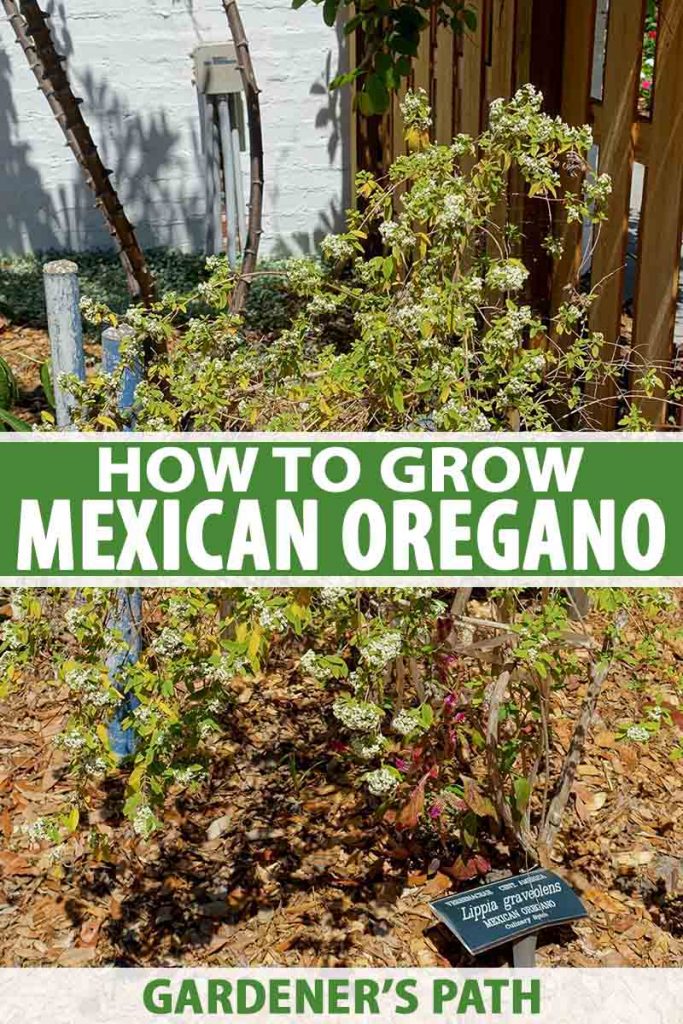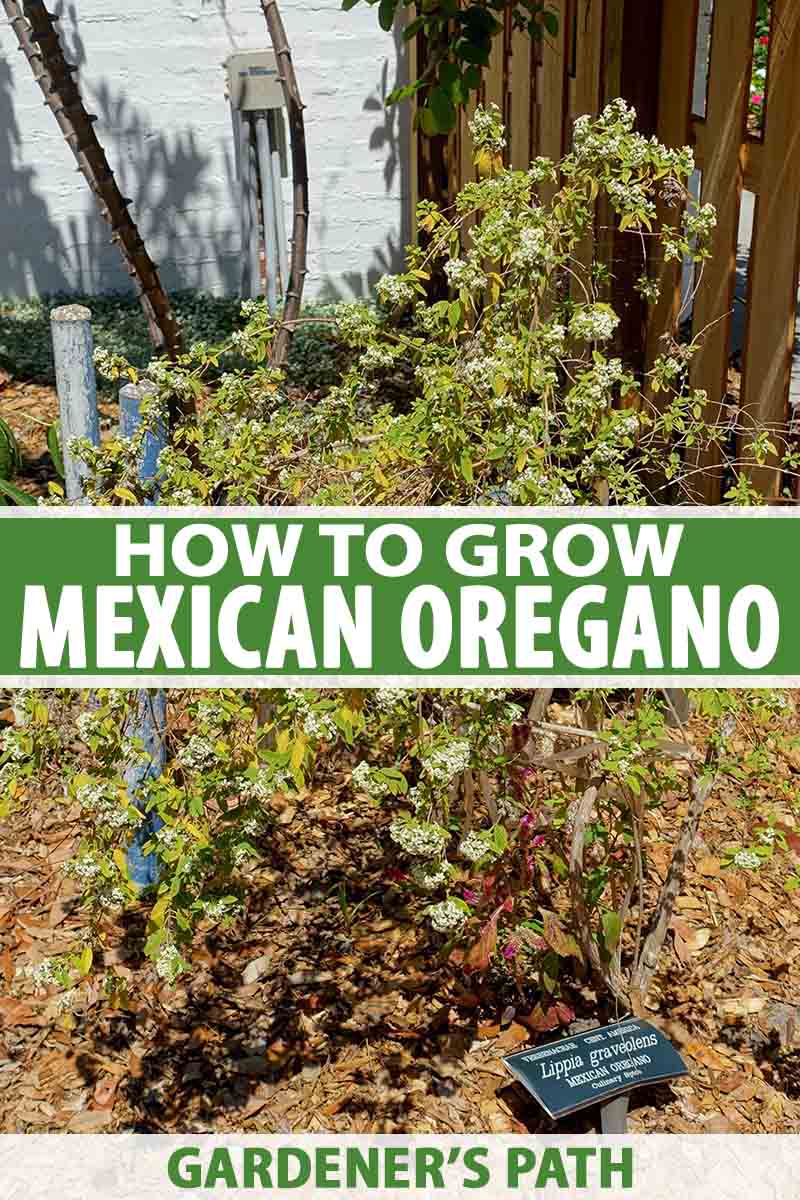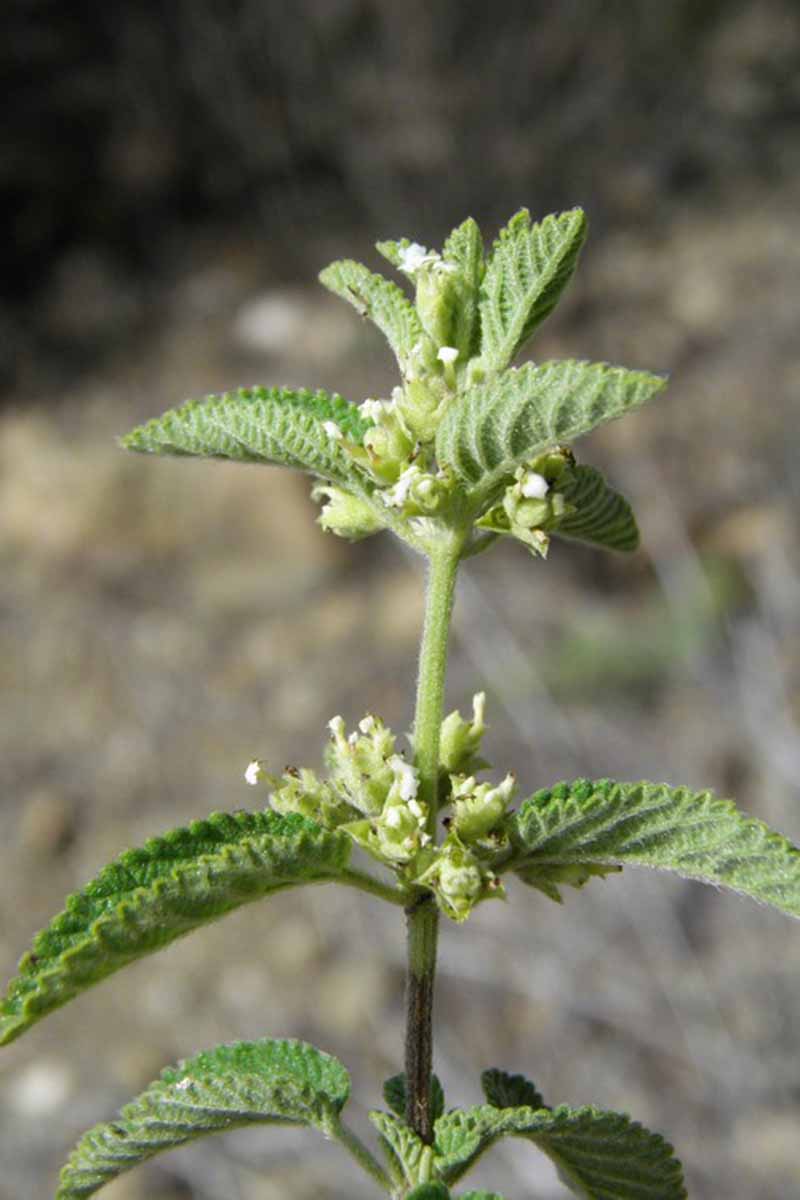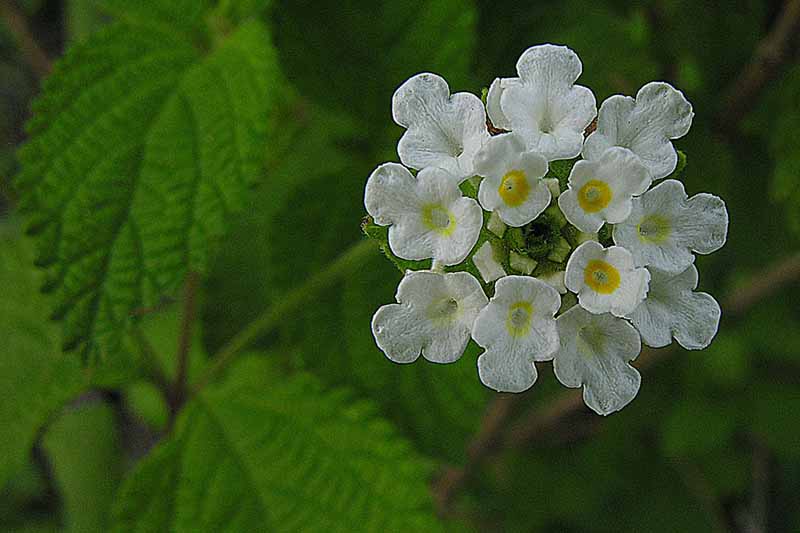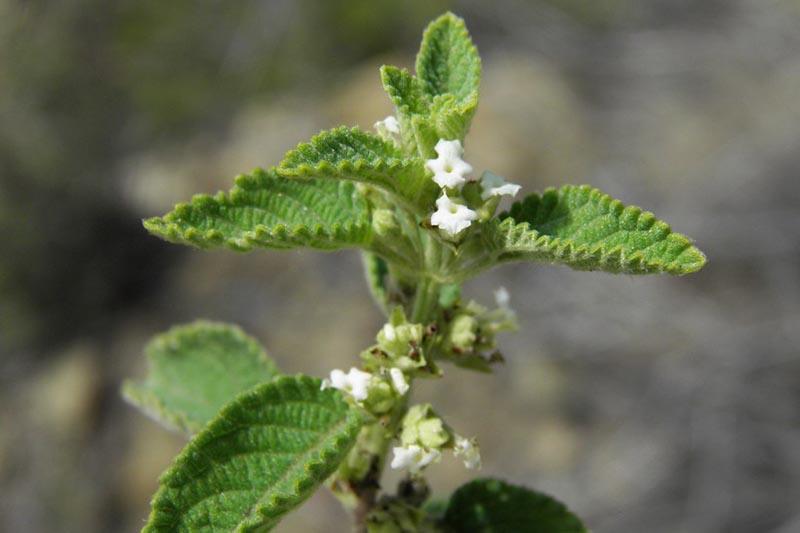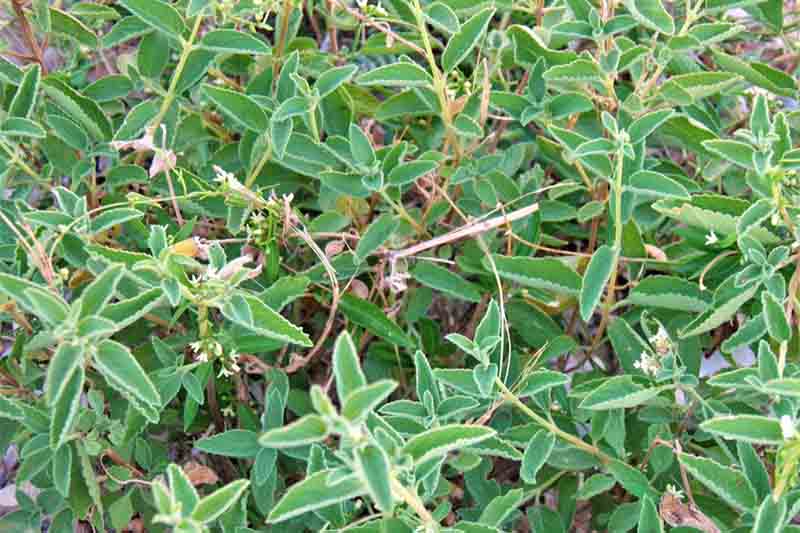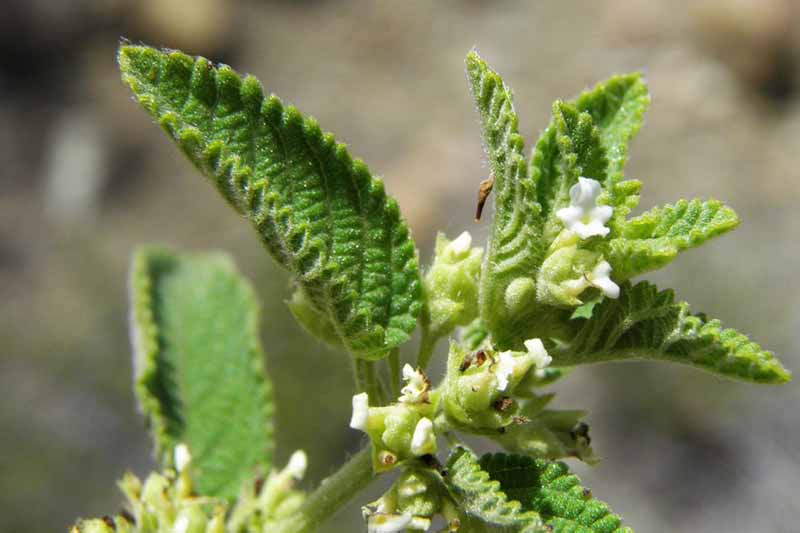We’re so glad you asked. To start, for purposes of this discussion, we’ll assume you meant “Mediterranean” when you said “regular” in your question above. That would likely be Origanum vulgare, a member of the mint family that is native to France, Italy, Greece, Israel, Morocco, and Turkey. There are dozens of plants, globally, that have some form of “oregano” in their common names, but we’re thinking you meant O. vulgare. See our full guide for growing common oregano here. We link to vendors to help you find relevant products. If you buy from one of our links, we may earn a commission. Given its heritage, you won’t be surprised to learn it’s cold tolerant only to about 30°F, thriving year-round outdoors in Zones 9-11. If temperatures do get down around freezing in warmer zones, the normally evergreen plant may lose its leaves but will likely come roaring back in spring. Elsewhere, it may be grown as an annual, or brought indoors in the winter.
What Is Mexican Oregano?
We’ve also seen this plant referred to as scented lippia, oregano cimarrón, Sonoron oregano, hierba dulce, redbrush lippia, scented matgrass, and Puerto Rican oregano. There are two other plants commonly referred to as “Mexican oregano,” Poliomintha longiflora and Monarda fistulosa var. menthifolia, neither of which are related to L. graveolens. The plant’s nectar is attractive to bees and butterflies if allowed to flower, and birds enjoy its seeds. Like its Mediterranean counterpart, L. graveolens is an herb commonly used to season food. Its flavor is described as being stronger and more earthy than that of Mediterranean oregano, and some say it has a citrusy flavor. Unsurprisingly, used fresh or dried, it pairs well with the flavors of traditional Latin American cuisine. L. graveolens is a rather unruly, woody shrub that can grow to a height of five feet with a spread of about the same. It can live for five to 10 years. The plant produces small, fragrant, fuzzy leaves, and clusters of small, fragrant white or yellow flowers. It has been used medicinally in Central America for centuries to treat stomachaches, asthma, bronchitis, and stress. The herb is also said to relieve bloating and gastrointestinal distress.
Propagation
It’s easy to get started growing Mexican oregano – and you have plenty of propagation choices. The easiest way is to purchase seedlings from a nursery, but it can also be grown from seed, cuttings, or division.
From Seed
If you are starting seeds indoors, plant them 1/4 inch deep in seed trays or peat pots in a quality seed starting mix. You can plant 2-5 of the tiny seeds in each hole. Place in a sunny spot and water uniformly. The seeds will germinate in two to four weeks. When the seedlings have 4 or 5 true leaves and all risk of frost has passed, transplant them to a sunny spot in the garden with well-draining soil. If you are planning to grow Mexican oregano in containers, you will need a pot at least 12 inches wide and deep.
From Cuttings
Using a clean, sharp knife or other cutting implement, cut an 8-inch stem of new-growth softwood. Remove about one-third of the leaves from the bottom of the stem. It’s best to collect cuttings in the morning when they are at their freshest, before the heat of the day sets in and plants become stressed. Dip the end of your cut stem into a powdered rooting hormone, and then place the stem into a pot with a mixture of sand and peat. Water as needed to keep the soil mixture moist but not waterlogged, and to prevent the leaves from wilting. Keep it in a sheltered location or indoors. After one to two months, when the roots are an inch long, it will be ready to transplant.
By Division
If you or a friend have an established L. graveolens growing in the garden, it’s quite easy to divide. In the early spring, dig the plant up (or remove it from its container) and cut it in half through the root ball. Plant divisions 12 inches apart. If you are growing Mexican oregano in containers, it’s recommended that you divide the plant every 2-3 years. See our guide to dividing perennials to learn more.
How to Grow
L. graveolens prefers full sun but it can tolerate some shade. It prefers loamy, sandy, well-drained soil with a pH of 6.0 to 8.0. Incorporate a little compost into the soil, but take care not to over-fertilize this plant. If you feel some fertilization is in order, apply a 3-2-3 (NPK) mix. If you’re growing in Zone 10 or higher, you’ll want to prune your plants down to one to two feet tall in the fall to encourage new growth in the spring. Once your plants are established, they need only occasional, deep watering. In winter, water only when the soil is really dry. This herb is drought tolerant, but in the case of long dry spells, it will lose its leaves. If you live north of Zone 9, you can grow this plant in a container and overwinter it indoors. Or you can simply grow it as an annual.
Growing Tips
Incorporate some compost into the growing site before planting Give these plants plenty of space as they can grow quite large Be careful not to overwater, as Mexican oregano doesn’t like wet feet
Managing Pests and Disease
While this plant is not usually plagued by any major pest or disease problems, there are a few to keep an eye out for: L. graveolens
Pests
Treat aphids, leaf miners, or spider mites with insecticidal soap or neem oil. See our guide to learn more about how to control aphids. You might also see whiteflies, which can be controlled with insecticidal soap or sticky traps. Insecticidal soap is also good for fighting mealybugs, which might pester your L. graveolens plants as well.
Disease
L. graveolens is susceptible to root rot if conditions are too wet. To determine if a plant suffering from root rot is salvageable, you’ll have to pull it up and assess the damage. If the entire root system is a soggy, rotten mess, you’re mostly likely out of luck and you’ll have to toss the plant. If, on the other hand, you see some healthy roots, trim away the bad stuff and replant in an area with better drainage. Prevent root rot by ensuring the planting area drains well and taking care not to over-irrigate.
Harvesting and Preserving
When your plant has reached at least two feet tall, begin harvesting L. graveolens as you wish for flavoring dishes. Simply pluck the leaves as required. Or you can cut a stem and strip the leaves from it. If you’re in an area that freezes, pull up the bush just before the first frost, separate the branches, and hang them upside down in a cool, dark place to dry. Make sure there’s plenty of air circulation.
Alternatively, individual leaves or stems with leaves can be laid in the sun or placed on trays in your food dehydrator to dry. When the leaves crumble, they are dry enough to store in zippered bags. You can remove the leaves or store entire stems. Store the bags in a cool, dry place. Read more about drying herbs in our guide.
Cooking Ideas
I mentioned above that Mexican oregano is commonly used in regional cooking, but don’t stop there. Consider using this seasoning in non-Latin foods such as meatballs or tomato sauces, as well. You can substitute it in recipes that call for oregano, so why not try it in this Mexican lasagna recipe from our sister site, Foodal? Or what about this slow cooker Tex-Mex chicken, which sounds delicious with whichever type of “oregano” you decide to use, also on Foodal. Most experts, however, caution against willy-nilly substituting one of the various types of oregano for another, because they do taste quite different. It’s certainly a fine and fun experiment to try, but you might not want to substitute Mexican oregano for Mediterranean for the first time on the night the Queen is coming over…
Quick Reference Growing Guide
Either way, it’s a fairly easy plant to grow – all it requires is a sunny location with moderately fertile soil, and not too much water. Have you heard of Mexican oregano before? Are you interested in adding it to your herb garden? Share your thoughts in the comments below! If you are looking to add other types of herbs to your garden, you’ll need these guides next:
Grow Common Sage, A Mediterranean Culinary Staple How to Grow Parsley in Your Home Herb Garden Rosemary: How to Grow this Classic Garden Herb
Photos by Fanny Slater and Raquel Smith © Ask the Experts, LLC. ALL RIGHTS RESERVED. See our TOS for more details. Originally published on March 9, 2020. [lastupdated]. Top photo by Wynn Andersen, University of California Berkeley, via CC BY-NC-SA 3.0. Product photos via IB Prosperity. Uncredited photos: Shutterstock. With additional writing and editing by Allison Sidhu and Clare Groom
